#Range and Sum Function
Explore tagged Tumblr posts
Text
Eloquent JavaScript Exercise -Range and Sum Function
Eloquent JavaScript Exercise -Range and Sum Function
In this article, we will talk about a JavaScript problem which is Range and Sum Function in JavaScript. This problem is in chapter 4 of Eloquent JavaScript book which very famous for JS of course. So we will understand this problem and also solve the problem with very basic logic. Range and Sum Function Problem The introduction of this book alluded to the following as a nice way to compute the…

View On WordPress
0 notes
Text
Good News - July 22-28
Like these weekly compilations? Tip me at $kaybarr1735 or check out my new(ly repurposed) Patreon!
1. Four new cheetah cubs born in Saudi Arabia after 40 years of extinction

“[T]he discovery of mummified cheetahs in caves […] which ranged in age from 4,000 to as recent as 120 years, proved that the animals […] once called [Saudi Arabia] home. The realisation kick-started the country’s Cheetah Conservation Program to bring back the cats to their historic Arabian range. […] Dr Mohammed Qurban, CEO of the NCW, said: […] “This motivates us to continue our efforts to restore and reintroduce cheetahs, guided by an integrated strategy designed in accordance with best international practices.””
2. In sub-Saharan Africa, ‘forgotten’ foods could boost climate resilience, nutrition

“[A study published in PNAS] examined “forgotten” crops that may help make sub-Saharan food systems more resilient, and more nutritious, as climate change makes it harder to grow [current staple crops.] [… The study identified 138 indigenous] food crops that were “relatively underresearched, underutilized, or underpromoted in an African context,” but which have the nutrient content and growing stability to support healthy diets and local economies in the region. […] In Eswatini, van Zonneveld and the World Vegetable Center are working with schools to introduce hardy, underutilized vegetables to their gardens, which have typically only grown beans and maize.”
3. Here's how $4 billion in government money is being spent to reduce climate pollution

“[New Orleans was awarded] nearly $50 million to help pay for installing solar on low to middle income homes [… and] plans to green up underserved areas with trees and build out its lackluster bike lane system to provide an alternative to cars. […] In Utah, $75 million will fund several measures from expanding electric vehicles to reducing methane emissions from oil and gas production. [… A] coalition of states led by North Carolina will look to store carbon in lands used for agriculture as well as natural places like wetlands, with more than $400 million. [… This funding is] “providing investments in communities, new jobs, cost savings for everyday Americans, improved air quality, … better health outcomes.””
4. From doom scrolling to hope scrolling: this week’s big Democratic vibe shift

“[Democrats] have been on an emotional rollercoaster for the past few weeks: from grim determination as Biden fought to hang on to his push for a second term, to outright exuberance after he stepped aside and Harris launched her campaign. […] In less than a week, the Harris campaign raised record-breaking sums and signed up more than 100,000 new volunteers[….] This honeymoon phase will end, said Democratic strategist Guy Cecil, warning the election will be a close race, despite this newfound exuberance in his party. [… But v]oters are saying they are excited to vote for Harris and not just against Trump. That’s new.”
5. Biodegradable luminescent polymers show promise for reducing electronic waste

“[A team of scientists discovered that a certain] chemical enables the recycling of [luminescent polymers] while maintaining high light-emitting functions. […] At the end of life, this new polymer can be degraded under either mild acidic conditions (near the pH of stomach acid) or relatively low heat treatment (> 410 F). The resulting materials can be isolated and remade into new materials for future applications. […] The researchers predict this new polymer can be applied to existing technologies, such as displays and medical imaging, and enable new applications […] such as cell phones and computer screens with continued testing.”
6. World’s Biggest Dam Removal Project to Open 420 Miles of Salmon Habitat this Fall

“Reconnecting the river will help salmon and steelhead populations survive a warming climate and [natural disasters….] In the long term, dam removal will significantly improve water quality in the Klamath. “Algae problems in the reservoirs behind the dams were so bad that the water was dangerous for contact […] and not drinkable,” says Fluvial Geomorphologist Brian Cluer. [… The project] will begin to reverse decades of habitat degradation, allow threatened salmon species to be resilient in the face of climate change, and restore tribal connections to their traditional food source.”
7. Biden-Harris Administration Awards $45.1 Million to Expand Mental Health and Substance Use Services Across the Lifespan
““Be it fostering wellness in young people, caring for the unhoused, facilitating treatment and more, this funding directly supports the needs of our neighbors,” said HHS Secretary Xavier Becerra. [The funding also supports] recovery and reentry services to adults in the criminal justice system who have a substance use disorder[… and clinics which] serve anyone who asks for help for mental health or substance use, regardless of their ability to pay.”
8. The World’s Rarest Crow Will Soon Fly Free on Maui

“[… In] the latest attempt to establish a wild crow population, biologists will investigate if this species can thrive on Maui, an island where it may have never lived before. Translocations outside of a species’ known historical range are rare in conservation work, but for a bird on the brink of extinction, it’s a necessary experiment: Scientists believe the crows will be safer from predators in a new locale—a main reason that past reintroduction attempts failed. […] As the release date approaches, the crows have already undergone extensive preparation for life in the wild. […] “We try to give them the respect that you would give if you were caring for someone’s elder.””
9. An optimist’s guide to the EV battery mining challenge
““Battery minerals have a tremendous benefit over oil, and that’s that you can reuse them.” [… T]he report’s authors found there’s evidence to suggest that [improvements in technology] and recycling have already helped limit demand for battery minerals in spite of this rapid growth — and that further improvements can reduce it even more. [… They] envision a scenario in which new mining for battery materials can basically stop by 2050, as battery recycling meets demand. In this fully realized circular battery economy, the world must extract a total of 125 million tons of battery minerals — a sum that, while hefty, is actually 17 times smaller than the oil currently harvested every year to fuel road transport.”
10. Peekaboo! A baby tree kangaroo debuts at the Bronx Zoo

“The tiny Matschie’s tree kangaroo […] was the third of its kind born at the Bronx Zoo since 2008. [… A] Bronx Zoo spokesperson said that the kangaroo's birth was significant for the network of zoos that aims to preserve genetic diversity among endangered animals. "It's a small population and because of that births are not very common," said Jessica Moody, curator of primates and small mammals at the Bronx Zoo[, …] adding that baby tree kangaroos are “possibly one of the cutest animals to have ever lived. They look like stuffed animals, it's amazing.””
July 15-21 news here | (all credit for images and written material can be found at the source linked; I don’t claim credit for anything but curating.)
#hopepunk#good news#cheetah#extinct species#africa#nutrition#food#farming#gardening#pollution#climate#climate change#climate crisis#democrats#us politics#us elections#kamala harris#voting#recycling#biodegradable#technology#salmon#habitat#fish#mental illness#mental health#substance abuse#hawaii#electric vehicles#zoo
842 notes
·
View notes
Text


New raid mechanic just dropped guardians go back to your math class
disgusting stuff below.
ykw if the warlock remembered just enough about the relation of fourier series with function inner product space he can indeed do that in his head.
we define our function inner product space C[0, 2π] with a set of functions continuous in range [0, 2π], and the inner product of two functions in this space f, g ∈ C[0, 2π] is defined as ∫f(x)g(x)dx (integrated in [0, 2π]). note that the functions in set S = {cos(nπ) | ∀ n∈ ℕ} ∪ {sin(nπ) | ∀ n∈ ℕ} are orthogonal to each other in this space, and all of them has squared norm π, so you can just match the terms with the same function and sum them up. in this case only 6cos3x on the left and 5cos3x on the right can match, along with the divide by π, the final answer is 6 × 5 = 30. another example is ∫ (3cos(x) + 4cos(2x) + 6cos(3x))(-cos(x) + 5cos(3x) + 18cos(5x)) dx (integrated in [0, 2π]) = (6 × 5 + 3 × (-1))π = 27π.
don't actually do that tho it's just a trivia.
#i don't play raid so every mechanic is basically this level of complexity anyways#i used the gaussian integral in another post so i gotta come up with another mildly interesting integral for this#i was not even finished there but if i talk more i would spend more time on that than the actual art lol#i am not normal#im glad this is my blog so i can do anything i want#destiny 2#destiny warlock#destiny hunter#destiny titan#destiny guardians#destiny 2 art#my art
516 notes
·
View notes
Text
More Sword Questions...
These are further questions prompted by a post already long enough that I’m not reblogging the whole thing. It’s here.
@softness-and-shattering (who posted the original Ask) wrote:
Thank you so much! What Im getting is that there arent any exact rules, different people and places mixed and matched sword features as they liked. Is that more or less correct? The swords that are green, is that oxidization? Theyre very pretty. And if fullers are to reduce sword weight, what are ridges for? Thanks again :)
*****
(1) Yes, it's oxidation. The uncomplimentary word is "tarnish", the complimentary word is "patina". Bronze swords in museums can be various colours ranging from green (verdigris)...
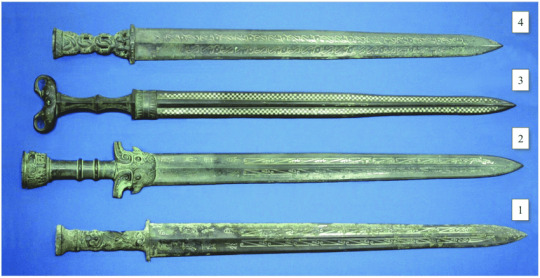
...through golden...

...to shades of brown and almost black.
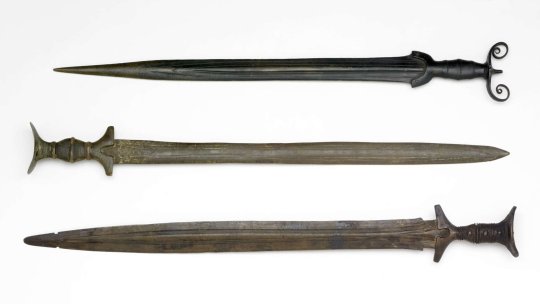
I don’t know why (archaeological metallurgy is a mystery to me) but at a guess it's related to the acidity of the ground in which they were found, the proportions of copper / tin / other metals in their bronze.
It may also be the point at which conservators decided they'd gone far enough with that particular artefact and further restoration / cleaning would cause damage.
*****
(2) Ridges on sword-blades add stiffness, is the remnant of the bar or rod of steel from which the sword was made, and are created as the blade's final form is hammered out on either side, leaving a sort of raised centre-parting.
(If this is over-simplified or just plain wrong and swordsmiths reading it are going "Nooo!", please correct me!) ;->
Here's one example with a very prominent ridge, from the Victoria & Albert Museum in London...

...and another with a more restrained centre-line from the Metropolitan Museum in New York.

*****
(3) Sword shapes and features changed depending on functional requirements. If a shape worked and its use didn’t change, it stayed the same. The Roman gladius and Japanese katana are two examples of not much change in shape over several centuries.
Demands of fashion also played a part in what kind of sword was worn when and with what.
While swords (not just Messers or falchions or other "fighting knives") do appear without armour in medieval art...
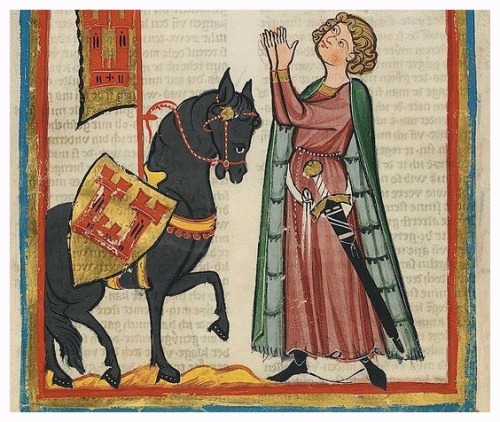
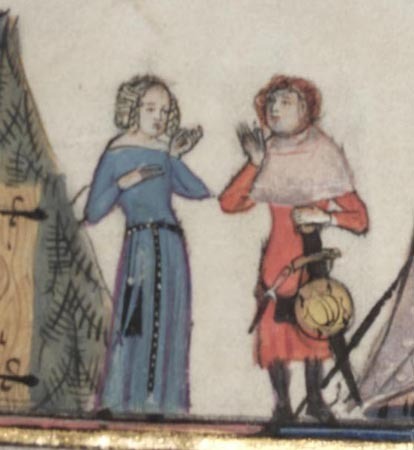
...swords only became a regular part of civilian dress in the mid-late 1400s.
In Germany this was called a Reitschwert - "riding sword" - for self-defence when out (riding) in ordinary clothes. In Italy it was a spada da lato - "side-sword" - for what's now called EDC (every-day-carry) not just in war. In Spain it was an espada ropera - "robe sword" - for wear with regular clothes rather than armour.
That last one, worn down, mispronounced or just plain pinched, became "rapier", and because it was worn every day, with stylish garments, it became yet another way in which to show off.
The most common Europe-wide rapier was a "swept hilt", comprising bars and loops, while Spain and Spanish-influenced places like Italy preferred the "cup-hilt", which had a different style of swordplay.
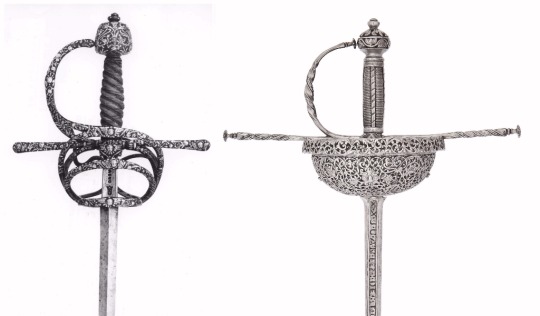
Cup-hilts are familiar from movies because it's easy to dress up a sport-fencing sword as something much older. Here's a stage-combat modern épée and two real rapiers.
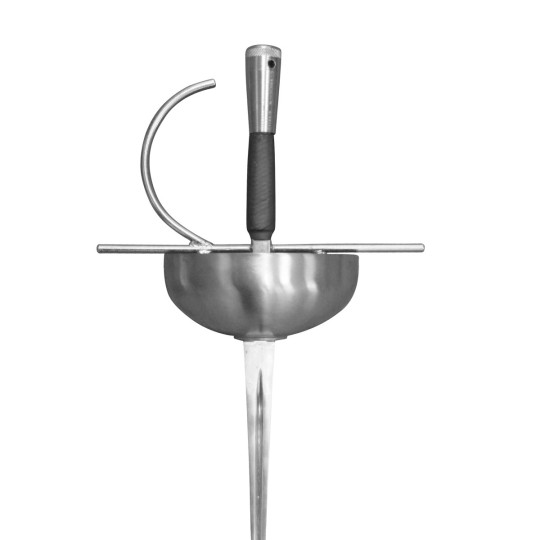
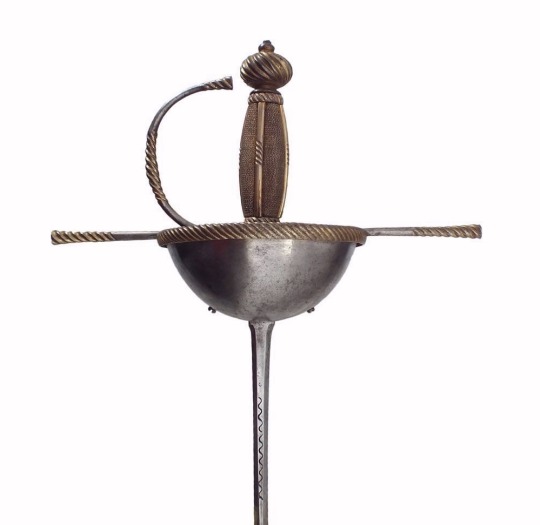

Cup-hilts could be plain metal bowls like those, or beautiful examples of chiselled, pierced metalwork.
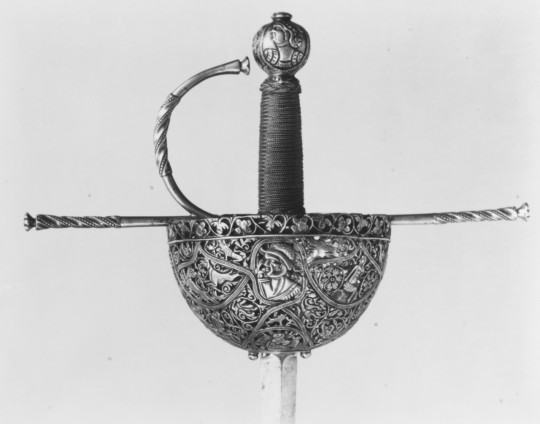
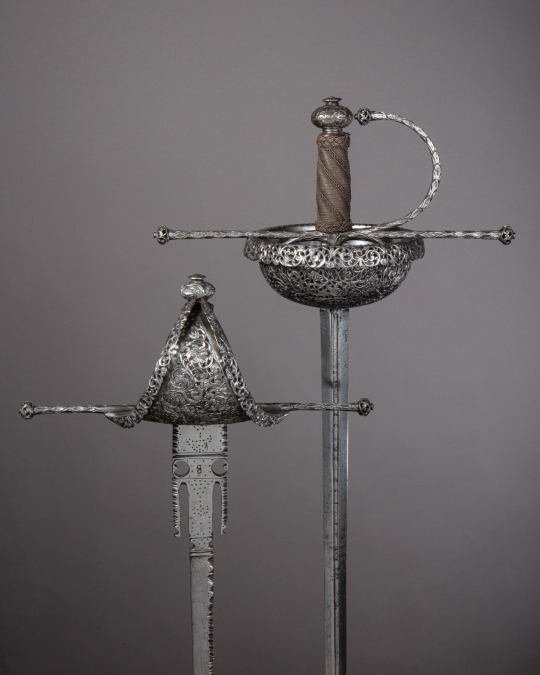
Swept-hilts could be equally impressive.
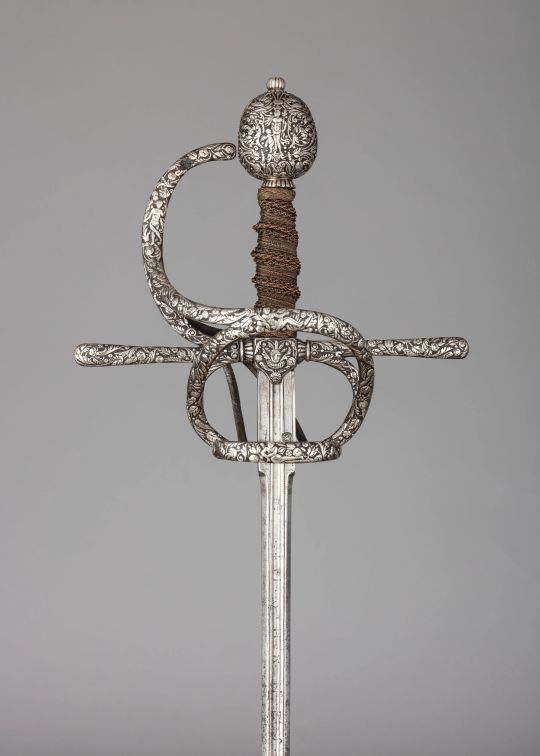

They were proof that their wearers were dedicated followers of fashion, men of wealth and taste - and, of course, always armed and just as always ready to use what they carried at the drop of whatever was just dropped.
Duelling became a craze, laws against it were ignored, any excuse would do, and Shakespeare summed it up nicely:
MERCUTIO: Nay, and there were two such, we should have none shortly, for one would kill the other. Thou? why, thou wilt quarrel with a man that hath a hair more or a hair less in his beard than thou hast; thou wilt quarrel with a man for cracking nuts, having no other reason but because thou hast hazel eyes. What eye but such an eye would spy out such a quarrel? Thy head is as full of quarrels as an egg is full of meat, and yet thy head hath been beaten as addle as an egg for quarrelling. Thou hast quarrelled with a man for coughing in the street, because he hath wakened thy dog that hath lain asleep in the sun. Didst thou not fall out with a tailor for wearing his new doublet before Easter? With another for tying his new shoes with old riband? And yet thou wilt tutor me from quarrelling?
(That one about the doublet had echoes in 1922, with The Straw Hat Riot in New York, involving assaults on men who hadn't stopped wearing straw hats by the fashion-approved date of mid-September. At least nobody got run through...)
Oddly enough, portraits which include rapiers usually show swept-hilts, even in Spanish portraits where cup-hilts might be expected (I've seen a couple, but not many). Perhaps the artist didn’t have one to hand, or thought the swept-hilt style was more visually interesting.
The smallsword (shorter, lighter, less cumbersome to wear) replaced the rapier, and it too featured a lot in portraits. It was a piece of masculine jewellery, with a stiff narrow blade on an elegant hilt which might be metal...
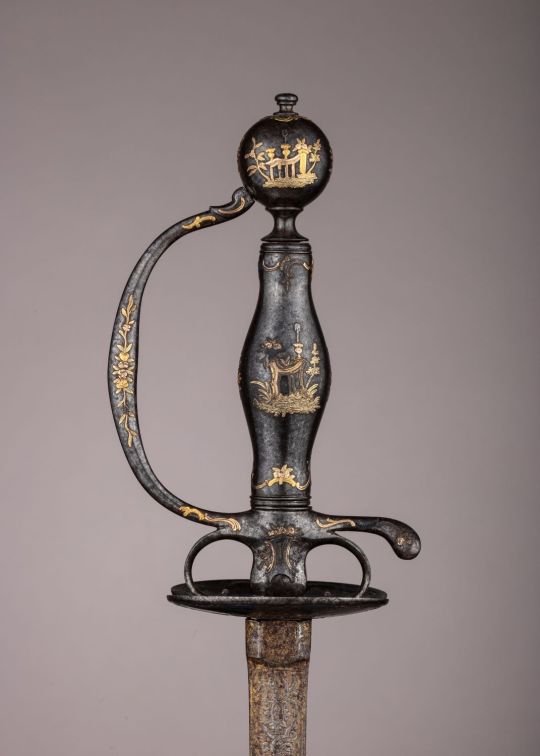
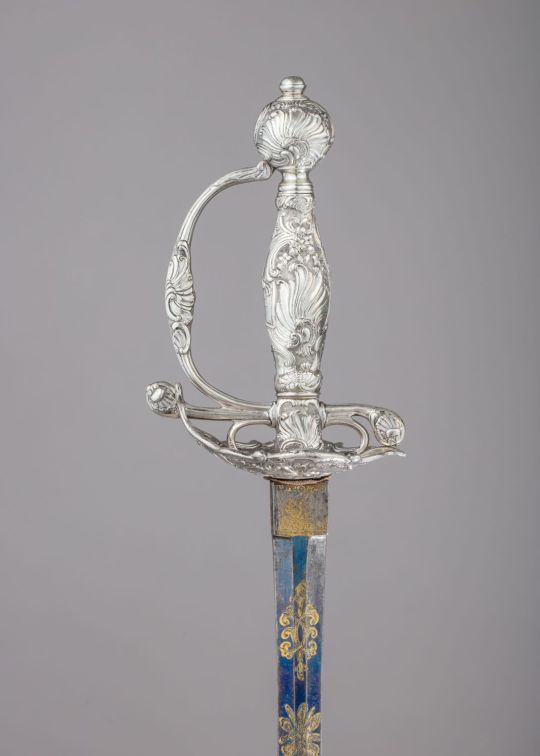
...or some more exotic material like mother-of-pearl or porcelain.

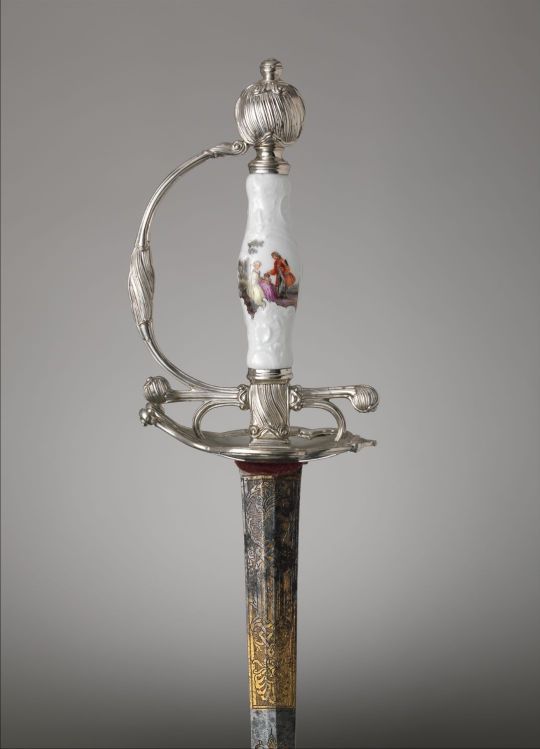
Then fashion changed again, smallswords also went away, and once again the only people wearing swords on a regular basis were uniformed military types, whose swords could be all sorts of shapes and sizes depending on branch of service and function.
Even when that function is just to be part of regalia, and look good on parade.

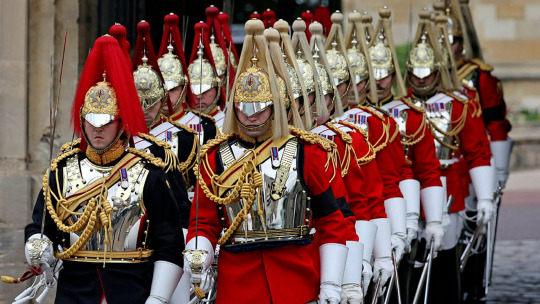
139 notes
·
View notes
Text

A small estate map of Northeast Wolderness, a wapentake within the County of Humbershire.
Pentascarth Peaks
River Wyn
Bridburn Orchard
Bridburn Abbey
Firley Village
Grinholm Mill
Skunlington Town
Skunlington Castle
Pentascarth Peaks
Pentascarth Peaks is an ancient evergreen woodland that once dominated Wolderness, but centuries of agricultural expansion have driven it back to the five hilltop peaks. Some say that Wyrms slumber within each of the five peaks, while others more accurately claim that the peaks mark the boundary of the Wolderness wapentake.
Both Bridburn Abbey and Skunlington Minster claim rights to the forest, leading to obvious land disputes. But while mortals argue over who owns what, the woods remain home to forgotten, ancient goddesses— though the monastics seem to agree on this being just superstition.
River Wyn
Leading down from Pentascarth Peaks is the River Wyn, cutting through Humbershire on its journey east to the Lyre Estuary. The Wyn boasts giant crabs with some allegedly growing to a formidable fifteen feet. But if you're tempted to go crabbing, beware of the water spirit Catharine Wart, who drags unsuspecting victims beneath the Wyn's currents.
Bidburn Orchard
Nestled within an oxbow is Bridburn Abbey's apple orchard. The monks began with the principle of ora et labora, or 'pray and labour,' but if it also produces apples so delicious and plentiful that kings from across the seas are willing to pay a pretty sum for them, then who are the Valynites to say no? Whether it's Wyn's blessed waters or the lay brothers' tireless work, the orchard certainly hasn't hindered the abbey's rise to fame and fortune. Just don’t get caught scrumping from it, or the monks will have your hand off.
Bridburn Abbey
Bridburn Abbey houses the Valynite Order, which seems more preoccupied with power and business than strictly worship. With extensive landholdings and significant influence in the region, the abbey functions as the principal rural manor of Wolderness. As a result, it has become the largest and wealthiest abbey in all of Humbershire. But beyond just collecting tithes from the surrounding peasants, the monks are skilled in land management, particularly in assarting the land of trees and marshes.
Firley Village
Firley Village, named after the fir trees that once grew in the area, is an agricultural settlement situated on the glebe of Bridburn Abbey.
A large plot of common land lies to the west of the village, while smaller plots are located south on the opposite bank of the River Wyn. While the villagers grow a rotation of barley and vegetables, they're best known for they're prized oxblood-coloured sheep, whose wool appears black but shines red when catching the light. You'd think the village would grow fat from the wealth of this highly sought-after wool, but as the village falls under the manorial holding of the abbey, it is the abbey that reaps the wealth.
Grinholm Mill
Grinholm Mill, a growing hamlet owned by the Rolleston family, offers a much more reasonable miller's toll compared to the one up by Bridburn Abbey. They've become quite popular amongst the peasants of Wolderness, (well at least by miller standards), as well as wealthy. Although they pay their tithe to the abbey like everyone else on this side of the river, they are perceived to have undermined the abbey’s milling soke monopoly—much to the abbey displeasure.
Skunlington Town
Skunlington is a prominent market town, both wealthy and influential, with a history that stretches back to the First Age. It's located behind a small range of hills that shield it from harsh weather and provides a natural defence, with an added Royal Castle on the highest peak for good measure.
The castle is about the only Royal influence in the town however, as Skunlington holds charters that grant it a degree of autonomy from the Crown. The town is governed by a council of Merchant Guild Aldermen in coalition with the Provost of Skunlington Minster. But despite this apparent independence, the town is practically in the pocket of the Archbishop of Humberthorpe, the capital city of Humbershire.
South of Bridburn Abbey, across the River Wyn, lies the land controlled by Skunlington Minster’s estate (marked in purple on the map). The large tract of empty land between Skunlington and Bridburn Abbey is an ongoing contention, as both estates claim it for their own. The bickering has gone on so long that the land has turned fallow. But the biggest source of contention is how Skunlington controls the river toll for use of its docks, with particularly extortionate prices for Bridburn Abbey. Rumour has it that Bridburn Abbey might just build a whole new town of its own, south of Skunlington, just to avoid paying this toll!
Skunlington Castle was strategically built in the First Age atop the highest hill on Pen-y-Skun for its vantage point overlooking the whole of North Wolderness Dale—crucial in the Woodsy War against the pagans. However, these days it’s the Crown's administrative center for Wolderness, run by the Under-Sheriff. Here, secular law is enforced, tasks such as collecting taxes for the Crown, raising levies, chopping off heads, that sort of thing. There’s a lot of overlap with the ecclesiastical courts however, sometimes resulting in collaboration and other times in clashes.
Skunlington Castle
But it’s not all work. The castle also serves as the hub for the gentry afterall, and they're not exactly know for their hard work. So the castle hosts games, jousts, fairs, that sort of thing, and a bed for when the King comes to visit.
93 notes
·
View notes
Text
Okay so here's my idea for the Sabers in this world

Avalon
A semblance named after the king of a forgotten kingdom that predated the land now know as Vale.
The semblance is not in fact hereditary like the Schnee's. But there is a reason such a rumor was allowed to propagate. Avalon can be gifted unto another who is of the same blood.
Upon being gifted it erases the individual's semblance. The user's auric reserves grows proportional to the previous users aura pools added to the new ones.
The King of Vale used Avalon to end the Great War. Avalon has several simple but devastating functions.
Ruler, seems to assimilate some level of natural skill and reflex into the user as well as a vague awareness and intuition.
This ranges from simple dejavu to dreams that reflect times of the previous user life.
Master, named for the ability to master one's body to a concerning degree. One seeming to have a longer lifespan, regenerative, defensive and physical capabilities proportional to their immense aura pool that is several to a dozen times longer then the average aura user.
And finally Saber, a simple technique but utterly devastating one. Allowing the user to draw forth a staggeringly deadly blade overwhelming aura.
Saber is not easily blocked nor countered seeming to ignore other semblances effects on it and proves rather strong against other auras.
over the generations the semblance grew to were the King of Vale was said to wipe out a army with but a few slashes.
Naturally the desire for this power drove many to pursue it.
Agrippina proved to be the closest to such a goal. While pregnant she convinced he husband to gift Avalon to her assuming it would instead be her's it was then the condition of sharing blood became apparent. As it did not become her semblance but instead was split between the the lives inside her.
(Nero, Saber & Saber Alter) However instead of growing more powerful the sum of the strength was divided between the three.
Nero would later gift Acalon to her little sister Lily (Saber Lily)
Haven't thought how Mordred adds I yet
65 notes
·
View notes
Note
what types of benefits does legal struggle (as opposed to illegal struggle) have for the Party?
The first type of benefits, and the most obvious ones, are the ones related to the bureaucratic and most purely administrative elements of its activity. Since the Party can exist as a legally registered entity within bourgeois law, it is, theoretically and often practically, recipient of the same benefits afforded to bourgeois parties. The extent of this is obviously never the same, since the Party is missing the financial support structures which are behind basically every other party, but the ability to contest in elections just like any other party, for example, both acts as a very natural megaphone for its program and, in the case of a smaller Party, it can serve as the first step to achieving legitimacy in the eyes of the broader working class. Another, more mundane example is the ability to, as a legalized and legitimate organization to the eyes of the state's bureaucracy, make use of the common spaces often put at disposal by local authorities, participate in local festivals or events, dealing with publishers/printing houses, that sort of thing.
Another type relates to the limits imposed on the activity of the Party and its general development. A situation of legality means that, save for the occasional attempt at non-aggressive infiltration (that is, with the purpose of collecting information rather than destroying it) which are easily avoided with a decent dem-cent structure, the Party is spared the state's explicit repressive bodies and functions until, of course, it violates the bounds of legality to such a degree that it can't go undetected and ignored. So generally speaking, the Party's activity is, in the context of legality, more constrained by its own resources than by any oppressive mechanism, and can therefore grow without constraint. And, apart from the full range of activity observed within legality, it is not only possible but necessary to overstep those boundaries:
Any Communist Party that claims or aims to be a revolutionary vanguard should be comfortable with, at all times that is necessary, going beyond what the law allows to maximize the political efficacy of certain campaigns. Being able to navigate legal voids and dangerous situations deftly, with set security protocols and countermeasures, also acts as a "hardening" experience for the individual militants. If we take illegality/persecution to be the adulthood of the Party, then these kinds of actions where the law is broken consciously and with purpose can be understood within the life cycle of a party to be akin to the animals that practice hunting/surviving via play, in mostly controlled situations. "Practicing" illegality when your activity is not generally defined by illegality both keeps the Party from straying into reformism or legallism, and it prepares the individual militants and the Party structures for the situation of illegality that, sooner or later, will come.
And the context of legality also makes the purposeful overstepping of its own boundaries easier, since the Party is not under heavy oversight or already repressed, these actions, when performed rationally and carefully, can very easily slip by undetected or not suppose enough of a problem that the cost-benefit ratio of cracking down on this activity is not worth it for the state. No half-competent bureaucrat of a regional police department is going to create a taskforce to go after the commies putting banners where they shouldn't, you know? Legality also has its drawbacks of course, but that's another subject :+)
Summed up: In a context of legality, it is easier to do basically anything, including breaking the law, and including the preparation for when the context of legality inevitably ends.
20 notes
·
View notes
Text

Coloured art of my Jojo OC Florian and his stand Savage Garden.
Full character bio under the cut cause I just love him and want the world to appreciate him. I know I did a brief one before but I've finalised him 😅
Full name: Florian De Locke
Nickname: Flori
Pronouns: He/him
Sexuality: Gay
Birthday: April 4th 1999 (age 25)
Born: Amsterdam, the Netherlands
Height: 178cm
Weight: 75kg
Occupation: Florist
Hobbies: Raising carnivorous plants, painting, baking.
Favourite Colour: Yellow
Favourite Flower: Tulips
Distinguishing Accessories: Plasters on fingers and face due to being clumsy handling thorned plants, Jacob's Ladder earrings, daisy brooch, embroidered sunflowers on dungaree legs, arm warmers.
Namesake: Smashing Pumpkins song 'Cupid de Locke'
🌷🌷🌷
Florian is a florist who has had a stand as long as he can remember, he has always been interested in botany since a young age and started working initally as a flower delivery boy in Amsterdam when he was growing up in the Netherlands. He now has his own flower shop and lives in a small apartment above it with his roommate Matteo who owns the record shop next door to his florist (I'll get to him eventually).
Florian is quite timid by personality and does not like confrontation. He has a tendency to undersell his products at times as he does not wish to argue with customers. He is also very kind hearted and has a bad habit of doing things such a funeral flowers for free.
He can be a pessimist at times and tends to overanalyse situations. However, he has a strong sense of morality and always acts to help someone weaker than him or those he loves without his usual hesitancy.
🌻🌻🌻
Florian's Stand- Savage Garden
Savage Garden is a humanoid, long ranged Stand. It's primary method of attack is using branches and vines to grip foes, similarly to Hermit Purple or Hierophant Green. It can also use its hands to emit a sweet scent similar to a pitcher plant which makes people feel safe and at ease. Florian prefers to use this when his friends are hurt or scared as opposed to offensively.
It's main ability is that it can touch plants and take on qualities of the plants it touches. Examples are:
Sunflowers - It will move quickly toward sources of light at speeds surpassing it's usual.
Roses - Gains thorned vines which can be used to inflict damage.
Horse Chesnut Tree - Gains spiked armour
Dandelion - Becomes light and able to float on air currents.
Stinging Nettle - Emits a poison that causes rashes and itching on contact.
It's limitation lies in the fact there must be a plant nearby for it to gain its qualities. It can be used for healing depending what plants it touches. It also functions poorly in bad weather and at night as plants need the sun.
🪻🪻🪻
Hope that sums him up ☺️ I've had a blast creating him. His inspiration all comes from the fact I love gardening, have silly amounts of houseplants and raise my own carnivorous plants 😂
#jojo oc#jjba oc#jojos bizarre adventure oc#jojos bizarre adventure#jojo no kimyou na bouken#jjba#sketchbook#art#my art#fan art#sketch#traditonal art#drawing#original character#jojo fan stand#florian de locke#jojo#jojo fanart#jjba fanart#my oc#oc design#ocs
15 notes
·
View notes
Note
Can I ask something that ive been thinking about for a few hours now, that i do not want it to come across as being rude, but WHY does LordCrumps and clique convert stuff that is already done? Because then we the downloader end up with duplicates and it can get confusing to find duplicates and not to mention that other creators might feel bad that their stuff will not be picked and used because they are choosing your stuff instead, which is not how the Sims 2 community works, we share and work together. Its just my opinion and I do not want you to be offended, i am just curious.
Hey Anon, Okay, this is quite a message to break down. First of, I assume that the "clique" you mention is myself, @tvickiesims and @platinumaspiration, @episims? (there are tons more people that I collab with personally, but these are the ones I mostly work with) If this is the case, then as friends we like working and collaborating together, many hands make light work in that sense! Like you mentioned, this community it built up on team work and collaborations, I personally love working with friends, and involving as many people as I can utilising their 'specialities' and knowledge to create awesome conversions.
So now onto the "duplicate" portion of that message, yeah fundamentally there will be dupes of stuff out there, each creator will do things differently, ranging from making stuff deco or functional, categorise them differently, edit the mesh differently, have shadows or not, reduce texture sizes / keep texture sizes etc, the list is endless. I convert stuff how I want them, how I want the object to be made. So to not "tell" people how to convert stuff to my specifications, I just do it myself.
I also like doing sets of stuff, so its a one hit download for all the items. I always hated it when there would be sets uploaded and the sofas would be on link 1, the chairs on link 2, the tables are on link 3 etc. I get overwhelmed so out of preference I just like a one link fits all.
Not to mention it's about consistency; like I said earlier I create stuff how I like it, if I include others stuff / or links to others, then they might not match, ie; missing shadows and what not. So this way, I know that all items in a set are going to be of the same quality.
Following on from that point, if I did link to others or include their stuff in the sets, it might go against the TOU of that creator - not that any one person owns the rights to TS4 conversions, but that's a different debate for another time...-
It is also easier for my brain to just load up Sims 4 Studio, see everything that belongs in that pack, and then just convert it in its entirety. I get overwhelmed when in a creative flow stopping to look around seeing if its already been done. At the end of the day, its not a competition or a contest, it does not matter if there is the same stuff out there, just means there is more choice.
Sorry for a long response, but I couldn't sum it up and shorter? But I hope it answers your questions!
Dag Dag! - I am going to crawl back into my cave now!
41 notes
·
View notes
Note
been meaning to ask, how was gatsby? 🤨
(just...you know...from a completely unbiased source)
Wellll. I physically vibrated for a few hours both before and after and forgot to breathe through most of it. I kinda forgot how to function as a human after.
This inability to type coherently sums it up oddly well:

Also me through the whole show:

Being in the same room as Jeremy singing is truly breathtaking and magical.
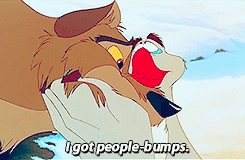
Just sitting there tingling in my body and soul. (Could be from the lack of oxygen from the forgetting to breathe part but still.)
Jeremy and Eva together is stunning.
I got to see a full emotional range in Jeremy's acting from comedic to raw emotion which of course was amazing.
The boy DANCED.
I'm very proud. He was doing great and then he stepped back after and almost tripped on the stairs and Nick (Dan Rosales at that show) caught him by the arm to catch him a little bit. Which was honestly equally as wonderful and endearing to witness. 😆
I genuinely enjoyed the show overall. It was beautiful and the entire cast did an amazing job and everyone who came out at the stage door was so sweet.
I wish I had more coherent thoughts to offer but at this point I'm afraid my brain might never catch up to the experience.

#the least biased to ever bias#I was also sparkly with a peacock feather#which is irrelevant but I overly committed to The Look#jeremy jordan#jay gatsby#the great gatsby#Broadway#eva noblezada#asks#meiloorunsmoothie#jeremy friends#💖#also Jeremy didn't question signing something weird for me and we love him for that#this has been a very unhelpful overview#the great gatsby musical#bwaygatsby#great gatsby#i am broth
23 notes
·
View notes
Text
FIRST COURSE - KNIVES
(or at least the ones I recognised from the TV-show so far)

mads mikkelsen by kenneth willardt for vanity fair italy, 2015 - aka my favorite shoot of his.
i apologize.
1. Spyderco Harpy
• appears in Hannibal season 3 in Italy .ೃ࿐
The Harpy was designed as a knife for seamen, featuring a karambit style blade that magically cuts right through rope, the serration lending a hand to the task.
Additionally, the Harpy boasts a detailed tip, which can chew through a manner of different materials, probably one of the main reasons why Hannibal found it handy for different...matters. To sum it up: This is not one of his kitchen knives, but rather one he used as a pocket knife in all different kind of situations.
Originally the japanese Spyderco Harpy was designed to accommodate the needs of commercial fishermen. The hawksbill blade is modeled after the talon of the Harpy eagle, allowing for a deliberate pulling cut where the object does not slip off the end of the edge. The hollow-ground blade incorporates SpyderEdge serrations and a thick spine for support. The handle is made of stainless steel with a drying vent, perfect for Hannibal and his exquisite taste…and of course correspondingly expensive. A good 200 euros for this fine tool, everybody. But he seems to be rolling in money, so no problem for our favourite cannibal.



2. Chroma Type 301 style by F. A. Porsche
• appear in various episodes as Hannibal’s kitchen knives .ೃ࿐
To be honest I really fell in love with the Spyderco Harpy and didn’t quite think anything could change that. But. When I tell you the design…omg. The Chroma Type 301 knife series was brought to life by F.A. Porsche (yup, the german car guy) and the chef of the decade, Jörg Wörther (austrian chef).
Japanese knives have achieved global recognition for their quality, as the Japanese hold a long tradition in metallurgy. The Japanese metallurgists have elevated the forging and sharpening of the blade into a form of art for hundreds of years, since the era of the notorious Katana swords. On the other hand, Europeans and Americans also make excellent knives, often characterized by superior ergonomics and design, but rarely distinguished for the hardness and sharpness of their blade.
The type 301 knife series by Chroma bridges the gap between Japanese tradition and the European design, this series standing out for its unique design and practical function. Porsche and Wörther closely worked together in order to develop the final shape of the handle, which is optimized for maximum usability. The result is a precision cutting tool. Each knife is carefully weighted to ensure perfect balance in the hand and in combination with the highly ergonomic handle, it feels like an extension of the user’s hand. The Chroma type 301 knives follow faithfully the Japanese philosophy, which dictates a knife to be lightweight and flexible. They are made of high-quality Japanese 301 steel, a relatively lightweight material which has a 56-58 hardness rating in the Rockwell hardness scale. This renders the type 301 knives harder than most of the non-Japanese knives and among the hardest knives within their price range. The increased hardness allows the knife to maintain its sharpness longer and also to slice better.Even though the Chroma type 301 knives are mass produced, they are carefully razorsharp sharpened by the hand of a master. Quality control is performed on one-to-one basis and not through random sampling. And by the way…did I mention the extraordinary design.
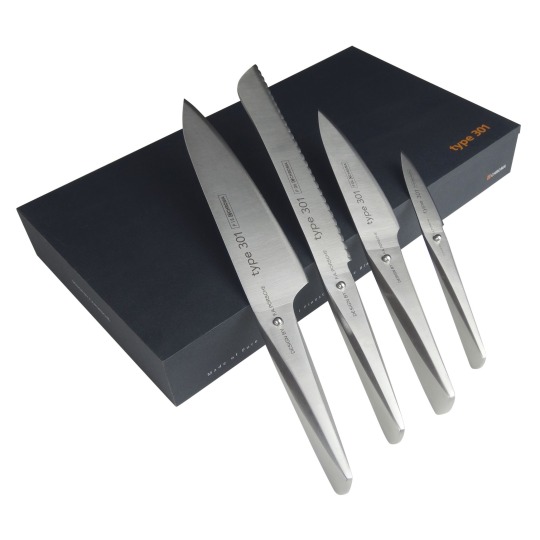
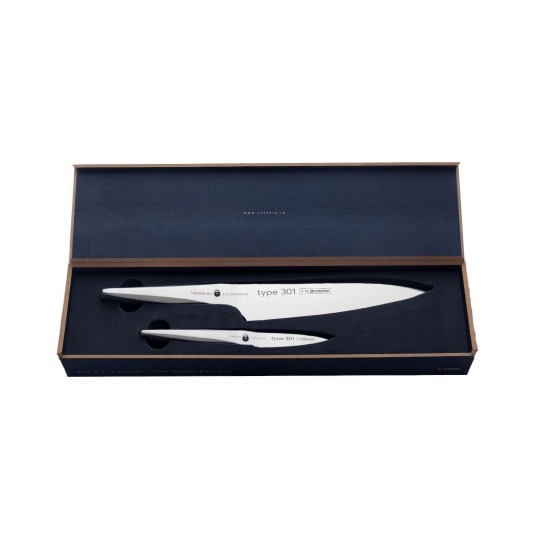
3. Kai Shun Knives
• appear in various episodes as Hannibal’s kitchen knives .ೃ࿐
Before Shun Cutlery was established in the western market, most people were used to heavy European-style kitchen knives. With Shun’s entry into the marketplace, home cooks and professional chefs alike were introduced to the lightweight precision of fine Japanese cutlery. Thinner blades, sharper edges, and lighter weight gave Shun a high-performance edge that the heavier knives couldn’t match. Each Shun still takes at least 100 handcrafted steps to complete and Shun remains true to its ancient heritage of quality. At the same time, Shun takes advantage of thoroughly modern, premium materials and state-of-the-art technology to provide that traditional quality to millions of professional chefs and avid home cooks throughout the world.
Today, Shun has become one of the most well-known names in kitchen cutlery. It has won awards for innovation and quality. It has been admired and emulated. With new styles, new materials, and an ongoing dedication to the spirit of innovation, Shun will continue to provide Japanese kitchen cutlery of outstanding beauty, impeccable precision, and the very highest performance.

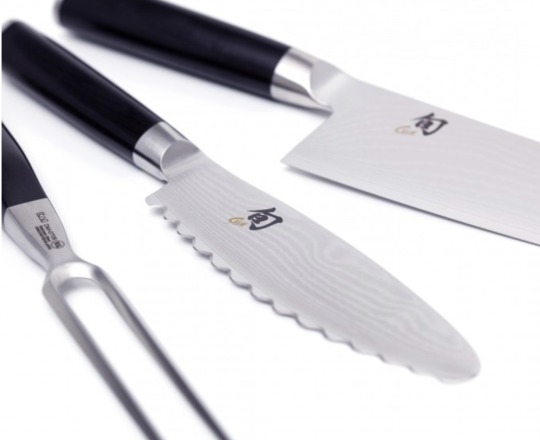

4. Global Knives
• appear in various episodes as Hannibal’s kitchen knives .ೃ࿐
Global G Series knives are typically put together in what's called a three piece construction. The blade is stamped out of sheets of steel of a proprietary stainless steel alloy, while the two handles are created and welded together separately. The blade and handle are then welded together into one solid piece of stainless steel.
What makes these Global knives a bit unusual is that they start off empty. The blades are welded on without a tang and the handles are actually hollow. Instead, to maintain balance, they are filled with a very precise amount of sand.
Now it's quite unusual and you might just write this off as Japan being Japan and doing things differently because...well, they're Japan, but it seems to work very well for them.
The ability to inject a precise amount of weight (sand, in this case) as needed directly into the knife has led to them getting a reputation or having very precise and excellently balanced knives across their range of products.
That said, ergonomics are always personal.
Global G Series knives tend to feel very lightweight and evenly balanced. Some people tend to prefer a knife that is more weighted to the back for a firmer grip, or to the front for chopping action. This is the classic global knife version, but of course there are various other series one can discover. Unfortunately I am not able to tell the exact version Hannibal uses in the show by just watching...if anyone has an idea let me know!!!
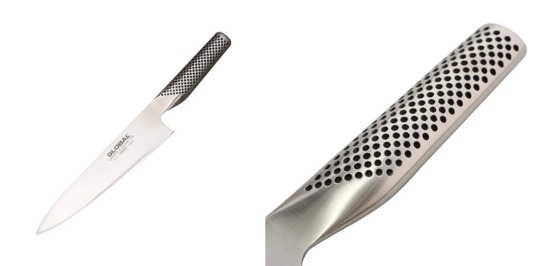
#hannibal lecter#hannibal#hanniballecter#hannigram#mads mikkelsen#mads#food#michelin#cooking#kitchen knives#old money#aesthetic#eat the rich#eat the rude#fannibal#will graham#fyp#fypツ#fypシ#vintage#chef#cheflife#Spotify#yeehaw peepaw#peepaw#fashion#fannibals
38 notes
·
View notes
Text



The Mass Evacuation of Soviet Factories in Early World War II
1941 was certainly a bad year for the Soviet Union. Within a matter of months after the start of Operation Barbarossa, German forces marched deep into Soviet territory, even advancing to the gates of Moscow itself. Loses were horrific as hundreds of thousands of soldiers were killed and hundreds of thousands more were captured. City after city fell to the invaders making it seem like nothing could stop the German blitz. Worse yet the German military burned, raped, and pillaged it's way across Eastern Europe resulting in hundreds of thousands of civilian deaths and millions of refugees in the first year alone. In the face of such wanton destruction economic and industrial damage might seem unimportant but regardless the loss of industrial infrastructure severely hindered the Soviet Union's ability to wage war as factories which produced war materials and important resources were either destroyed or came under German control. The Soviet Union had a great advantage over Germany because of it's massive industrial base and plentiful access to resources. If the Soviet's wanted to maintain that advantage they needed to enact a monumental plan to ensure that said industries and resources remained far behind friendly lines and out of the reach of Germany.
The plan was simple, so simple that it can be summed up with this classic Spongebob meme,

The plan that was enacted was to dismantle and uproot Soviet factories in the west and move them east past the Ural mountains, thus recreating an industrial heartland out of the reach of German occupation and even long range bombers. To say that such a movement of people and things was monumental would be an understatement. In 1941 the Soviets evacuated and moved 2,593 industrial and agricultural enterprises, among them were over 1,500 large factories. Buildings were demolished and rebuilt, tools and machinery were packed up and moved, almost everything that was not bolted to the ground was taken and redeployed or rebuilt in the east. This included the people who were needed to work the factories, which amounted to 18 million people. This endeavor required the use of 30,000 trains hauling 1.5 million cars. In addition to the task of moving stuff, new infrastructure had to be built to service these factories. Infrastructures such as railroads, roads, canals, plumbing, electricity, food distribution, medical services, and worker housing. Basically everything needed to run a factory town. Most incredibly most of this was done in less than a year.
By 1942 most of the factories and enterprises that were evacuated from the west were up and running. The result of this endeavour meant that when the Germans advanced deeper within the Soviet Union, they failed to capture the resources needed to keep their own war machine functioning. By 1942 seemingly endless numbers of tanks, planes, and guns would flood out of factories east of the Urals, and there was not a damn thing the Germans could do about it.
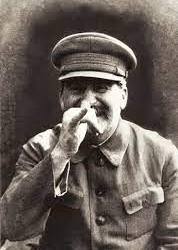
203 notes
·
View notes
Note
Do u know any reason why the Dodge Durango and Dodge Charger look kinda similar?
I see them on the streets all the time and I've noticed (at least the newer ones) have the same headlight and tail light design


Well, the short answer to that is "design language". The explanation of that short answer, however, is a bit more complicated than that, and is about why cars look the way they look - what makes them different, what makes them similar, what makes them change and how to tell them apart. So hop on under the Read More and come learn all that!
Design language is the sum of design rules and guidelines that make a brand's product range both distinct from others and coherent within itself. If you've ever recognized whose commercial it was, who printed the book, who manufactured the device, who designed the car, that was design language doing its job!
You know those "If [brand] made [thing]" renders you see out there? That's following a brand language: crossing what [thing] looks like, which is usually pretty well determined, with the much more nebulous concept of what [brand] looks like. Defining a design language is defining the answer to that second question.
So, let's look at the Dodge lineup in 2011 (the first year with both current Charger and current Durango).

There's a couple of key shared traits: the trapezoidal grille (facing downwards in 'friendly' cars and upwards in 'aggressive' ones), the small indentation in the middle of the hood, the single angular headlight housing containing two round lighting elements, and some more minute stuff. Except one of these cars features none of that, because sometimes, when updating (and, especially, when bringing back) a model, the design traits of its ancestors are taken into account, and for the Challenger, Dodge's then-current design language was almost totally disregarded in favor of faithfulness to its 1970 ancestor.


Whereas the new Charger did the exact opposite, its 2006 revival being completely based on 2006 Dodge's design language, with extremely little left of the '60s original (I see the rear window shape and the beltline if I'm being Christmas generous). Of course, this already works towards the similarity we're getting at.
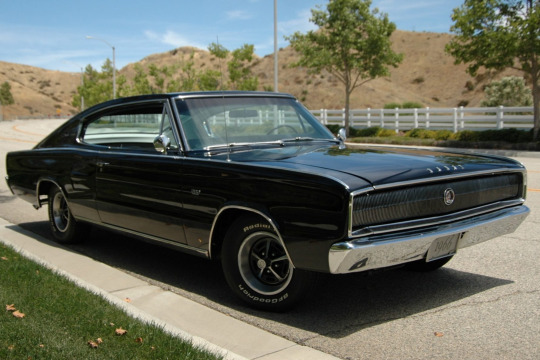

But the bulk of a car's design decisions are not about design language, but about the kind of car it has to be. A designer must contend with aerodynamics, safety requirements, customer needs and expectations, with the end result being that cars of the same segment will usually end up having the same basic proportions and largely overlapping silhouettes. See the cars below:
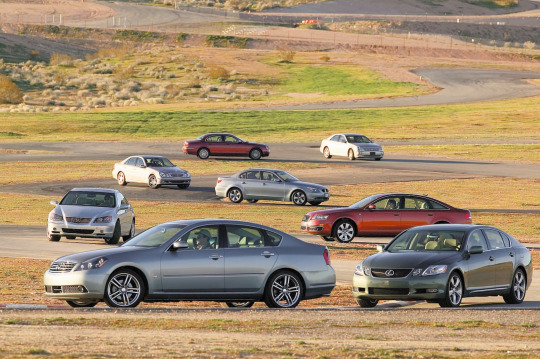
Sure, very different styles can produce a more angular or more soft outline (see the two cars in the background), but within the same era and segment many completely different cars will be almost indistinguishable between the wheels (see the two cars in the foreground). So the most design freedom is usually found in lights and grilles, since those can be quite radically altered in shape and proportions without interfering much with functionality (unlike for example window shapes or rooflines), and even slight changes in them can alter the look and perception of a car, because we parse them similarly to faces, and thus they can make a car looks angry, sad, silly, goofy, or adorably gleeful.
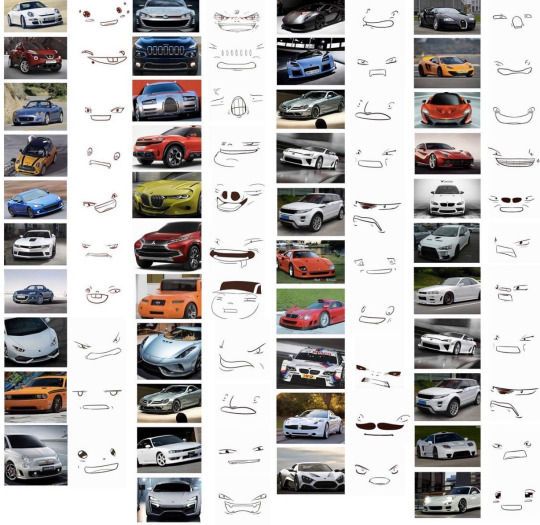
So most often, the most distinctive features of a car -and by extension of a design language- are found in lights and grilles (the outline of the headlights, the inside arrangement, the grille's shape, proportion, pattern, etc.), with the rest of the car being shaped by general principles like "angular design", "simple, smooth lines" or the likes. So if you want to learn to recognize cars, lights and grilles are usually what you should focus on, as you need to be an expert for your average car's overall shape to tell you much more than its segment and decade (and perhaps market, but that's a longer conversation). That does explain, doesn't it, why lights and grilles are similar in Charger and Durango, two cars in very different segments designed to look aggressive in a distinctly Dodge way.
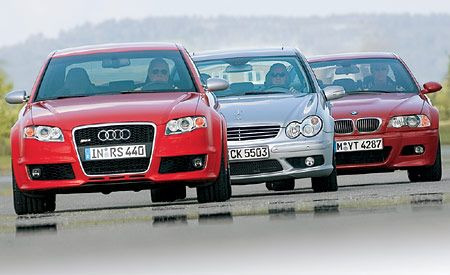
Let's exemplify this principle with three cars from the same segment, decade and country: In the mid-00s, Audi introduced a tall, chrome-lined downward trapezoid grille that contained the number plate; Mercedes had their classic grille -with the thick top chrome strip, small silver accents and the underlying middle line- and “merging circles” headlights; BMWs still had their staple "kidney grilles" and their quad circular headlights now contained in a wide, flat shape with round, downwards curving edges.
So even when these brands made different cars in different segments, those key traits kept them perfectly recognizable as theirs.

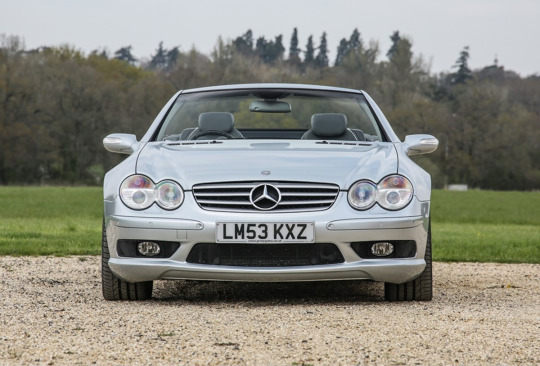
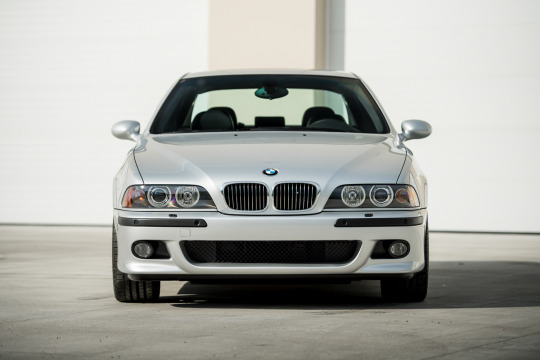
As you see in Mercedes, a brand's designs can get very consistent - but it can also get very inconsistent, too. For one, you don't design for a manufacturer, you design for buyers, so the design will change with who the buyers are, what they want, what they're attracted to - and when that is pretty consistent within a brand you get a lineup like Volvo's...

...whereas if you have a brand whose buyers vary wildly in all metrics that matter, you get a lineup like Kia's.

(I love this picture because you keep thinking "Well those two look similar at least" and they keep turning out to be two versions of the same car.)
The lineup's styling is also going to be more cohesive the more precious brand recognition is for it: a Ferrari needs to look like a Ferrari because that's most of why people buy a Ferrari to begin with, whereas the last time a Skoda didn't look like a Skoda it literally called for advertising.
Design languages also change and evolve with time, of course, and that's an element at play in the observation that spurred this post: Charger and Durango look similar not just because they were designed with the intention of looking similar, but also because they were updated with the goal of remaining similar, and were made even more so by the use of similar solutions to modernize their looks.

You'll notice that this was just an update of lights, bumpers and grilles - and indeed, these are what's known as "facelifts": where a new generation is usually redesigned from the ground up or retains little more than the core structure, facelifts are instead intragenerational updates that stay clear of radical changes (at most, things like hood and fenders can get updated if new headlight shapes require it).
But as we covered, those are the parts that matter - so while something as little as a facelift can be absolutely impossible to notice...

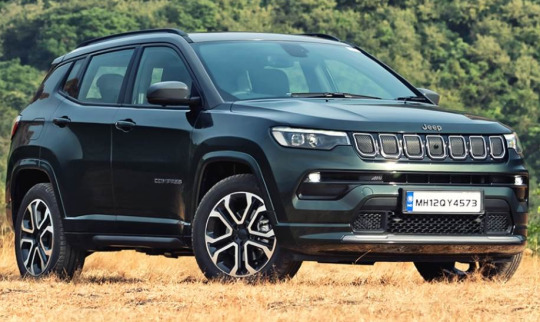
(seriously, two of my neighbors have these and it took me weeks of seeing them side by side to notice differences)
...it can also be effective enough to carry a model into a new decade...


...ore even powerful enough to completely salvage a car's design, and by extension its fortunes.

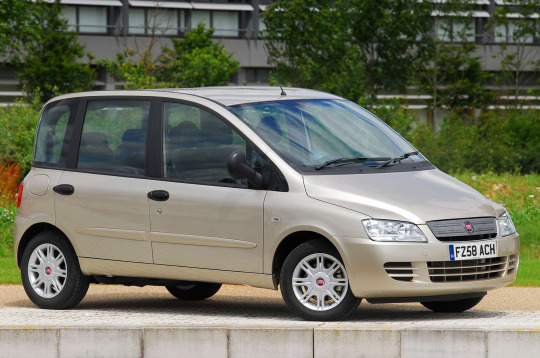
However, of course, it can wield the opposite power just as well.

Christ. Welp, no mistaking that for not a BMW now, is there. But to be clear, while BMW's styling has completely gone down the gutter lately, don't get the impression that any brand at any time is beyond a miss in this regard.
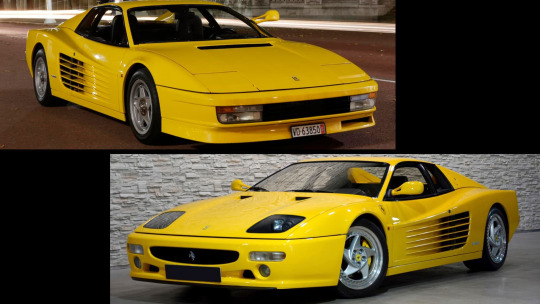
So, to close, while there is merit to the claim that cars today seem all the same, as we've discussed that's only true -and for good reasons- when looking at them from a distance. But when a landscape seems depressingly monotonous, you just have to look closer. And so, getting closer, analyzing the traits that weren't dictated by their nature, the decisions that weren't made for them by external factors, looking at what of them was shaped by agency and not necessity, they will all reveal themselves to all be different and to all have a personality of their own (bland as it may be). And that personality will change over time: changes are normal within a life, and actually good - they're a sign that life has been long enough to outlive the trends and ideas that shaped it, and that it's open to the new ones that have blossomed since. Trying too hard to fit in or stand out or seeking change for its own sake without a clear direction can ruin something good, sure, but change can also be very positive: it can allow keeping up with the times, or even a transformation for the better that lets go of what didn't work and accentuates what was good - and often, when it's done right, the world rewards it. And none of this requires a distancing from heritage or family, or even identity. In fact, as seen with our two cars, change can make a family bond even tighter.
This year will bring lots of change. Here's hoping we all manage to make it change for the better.
So yeah, hopefully that answers your question, anonymous asker who may well have fucked off to Hollywood in the over month and a half it took me to get to this (whoopsie)! Immense thanks to @ldub0775 for the effort and thought he joined me in pouring into this post, and to all followers reading this for sticking around into 2024 to witness that effort's fruits. Trust me, you will really like what's coming.
Links in blue are posts of mine about the topic in question: if you liked this post, you might like those - or the blog’s Discord server, linked in the pinned post!
#design language#car design#dodge charger#dodge durango#dodge challenger#audi#mercedes#bmw#volvo#kia#the great catchup
39 notes
·
View notes
Text
work today
sales person: I need an updated version of [customer's] purchase report to confirm what is left to purchase.
me: I last updated it less than one business day ago and that version hasn't been completed yet. Refreshing the report now would duplicate lines that weren't bought on Friday and make this messy to work through. Everyone added their buys to Friday's sheet so you can use that to check what was ordered. Also, this report is linked to customer payments so there's no reason to run it again until we receive one. I'm only refreshing it when new payments come in. (<- boundary stated because she often fails to understand that prerequisites must exist for certain files to function correctly.)
sales person: Ok I can use Friday's sheet. But I don't agree that we should chose whether or not to run reports based on payments. We still need to service the customer.
me: I am unsure how this report can be used when we haven't received a payment. Its only purpose is to sum up what the customer paid for. How did you manage this customer before I created this report?
sales person: "No offense, but I don't think [customer] payments have anything to do with running reports they request." <- direct quote
me: This specific report was created purely for matching this customer's purchases to their payments. If the customer is requesting information, I need you to tell me exactly what they want so we can determine the best way to provide the data they want. The data they need likely exists in our customer portal, and using that is a far better option than misusing an existing report for something other than its intended purpose.
(end of ticket)
this was 4 hours ago now and she still hasn't told me what she's trying to do or what the customer wants to see. She later told my boss half of the customer's request without including me though so ??? I had to hear it telephone-style from my boss.
also, she shared old versions of this report with the customer by making copies of my files and sharing the copies. But she saved the copies in my original folder where I could look at them. There are columns that this customer is NOT supposed to see, but rather than deleting them she just hid them. There weren't protected ranges on the sheet either.
Can we please do better.
13 notes
·
View notes
Text
Python Libraries to Learn Before Tackling Data Analysis
To tackle data analysis effectively in Python, it's crucial to become familiar with several libraries that streamline the process of data manipulation, exploration, and visualization. Here's a breakdown of the essential libraries:
1. NumPy
- Purpose: Numerical computing.
- Why Learn It: NumPy provides support for large multi-dimensional arrays and matrices, along with a collection of mathematical functions to operate on these arrays efficiently.
- Key Features:
- Fast array processing.
- Mathematical operations on arrays (e.g., sum, mean, standard deviation).
- Linear algebra operations.
2. Pandas
- Purpose: Data manipulation and analysis.
- Why Learn It: Pandas offers data structures like DataFrames, making it easier to handle and analyze structured data.
- Key Features:
- Reading/writing data from CSV, Excel, SQL databases, and more.
- Handling missing data.
- Powerful group-by operations.
- Data filtering and transformation.
3. Matplotlib
- Purpose: Data visualization.
- Why Learn It: Matplotlib is one of the most widely used plotting libraries in Python, allowing for a wide range of static, animated, and interactive plots.
- Key Features:
- Line plots, bar charts, histograms, scatter plots.
- Customizable charts (labels, colors, legends).
- Integration with Pandas for quick plotting.
4. Seaborn
- Purpose: Statistical data visualization.
- Why Learn It: Built on top of Matplotlib, Seaborn simplifies the creation of attractive and informative statistical graphics.
- Key Features:
- High-level interface for drawing attractive statistical graphics.
- Easier to use for complex visualizations like heatmaps, pair plots, etc.
- Visualizations based on categorical data.
5. SciPy
- Purpose: Scientific and technical computing.
- Why Learn It: SciPy builds on NumPy and provides additional functionality for complex mathematical operations and scientific computing.
- Key Features:
- Optimized algorithms for numerical integration, optimization, and more.
- Statistics, signal processing, and linear algebra modules.
6. Scikit-learn
- Purpose: Machine learning and statistical modeling.
- Why Learn It: Scikit-learn provides simple and efficient tools for data mining, analysis, and machine learning.
- Key Features:
- Classification, regression, and clustering algorithms.
- Dimensionality reduction, model selection, and preprocessing utilities.
7. Statsmodels
- Purpose: Statistical analysis.
- Why Learn It: Statsmodels allows users to explore data, estimate statistical models, and perform tests.
- Key Features:
- Linear regression, logistic regression, time series analysis.
- Statistical tests and models for descriptive statistics.
8. Plotly
- Purpose: Interactive data visualization.
- Why Learn It: Plotly allows for the creation of interactive and web-based visualizations, making it ideal for dashboards and presentations.
- Key Features:
- Interactive plots like scatter, line, bar, and 3D plots.
- Easy integration with web frameworks.
- Dashboards and web applications with Dash.
9. TensorFlow/PyTorch (Optional)
- Purpose: Machine learning and deep learning.
- Why Learn It: If your data analysis involves machine learning, these libraries will help in building, training, and deploying deep learning models.
- Key Features:
- Tensor processing and automatic differentiation.
- Building neural networks.
10. Dask (Optional)
- Purpose: Parallel computing for data analysis.
- Why Learn It: Dask enables scalable data manipulation by parallelizing Pandas operations, making it ideal for big datasets.
- Key Features:
- Works with NumPy, Pandas, and Scikit-learn.
- Handles large data and parallel computations easily.
Focusing on NumPy, Pandas, Matplotlib, and Seaborn will set a strong foundation for basic data analysis.
4 notes
·
View notes
Text
youtube
UFC: Sudden Impact is a mixed martial arts game released for the PlayStation 2 in 2004, developed by Opus and published by Global Star Software. It falls under the category of fighting games, but unlike your typical arcade brawler, it focuses on recreating the sport of mixed martial arts as seen in the UFC. The game features a roster of real-life UFC fighters, each with their own unique combat styles, such as Brazilian Jiu-Jitsu, Muay Thai, Wrestling, and Kickboxing, allowing for a wide variety of fighting strategies.
One thing I like about Sudden Impact is its blend of striking, grappling, and submission techniques. It tries to mimic the dynamic nature of MMA by allowing players to mix things up during a fight—whether it's throwing punches and kicks or taking the fight to the ground for a submission attempt. It offers a variety of modes, including an arcade-style mode where you fight your way to the championship and a story mode that is probably the most interesting part of the game.
In story mode, you create your own fighter and train him, progressing through the ranks of the UFC, unlocking new moves, and customizing his fighting style as you go. I found this mode to be engaging because it adds some depth to the typical fight-after-fight formula, making you feel invested in your character's development.
In terms of presentation, the visuals are decent for a 2004 PS2 game, though not groundbreaking. The fighters look recognizable enough, and the animations are functional, though a bit stiff at times. What stands out more is the range of moves and how it captures the chaotic feel of an MMA match, with fighters able to transition between different phases of combat—striking, clinching, and grappling—pretty smoothly. However, the AI can sometimes feel a bit unbalanced; some matches feel too easy, while others ramp up the difficulty unexpectedly.
For fans of the sport, UFC: Sudden Impact offers an authentic experience, though it has its flaws. The controls can feel a bit clunky, especially when trying to execute more complex moves or submissions. Honestly, I would have preferred the rounds to last in real time, rather than the accelerated timer where one second feels like five. This creates a sense of urgency that isn’t necessary, as MMA is often about strategy and patience, not rushing. Still, it’s a solid attempt at bringing MMA to a gaming platform, especially considering the hardware limitations of the time.
To sum it up, if you want a UFC experience on the PS2 that balances action with some customization and depth, Sudden Impact delivers on that front. However, if you're after a more refined game with smoother gameplay and challenging AI, you might find it lacking in those areas.
PS: In this video, I’m working my way up to the gold in Tournament Mode as Andrei 'The Pitbull' Arlovski, one of my all-time favorites alongside Mark Coleman and Bas Rutten.
#retro gaming#retro gamer#retro games#video games#gaming#old school gaming#back to the past#I want to go back#those were the days#good old days#ufc sudden impact#ps2#playstation 2#fighting games#console gaming#gaming nostalgia#love gaming#gaming life#gamer for ever#gamer for life#Youtube
4 notes
·
View notes